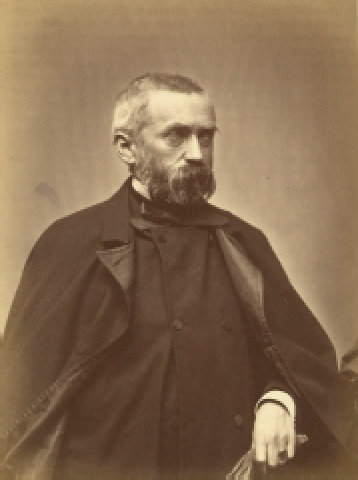Enoch Pratt's neighbor, William
Thompson Walters, who lived in splendid quarters on West Mount Vernon Place,
came to Baltimore long after George Peabody left to take up residence in
London. The son of a Philadelphia banker, Walters was educated to be a
civil engineer. He was sent to manage a smelting operation in Lycoming
County, Pennsylvania, and produced the first iron manufactured from mineral
coal in the United States. Walters arrived in Baltimore in 1841. He opened
a general commission business and later, in 1847, became a wine merchant.
Walters presided over the first line of steamers between Baltimore and
Savannah and became heavily involved in railroads in the South. His sympathy
and strong connections with the Confederate States prompted him to take
up residence in Paris during the Civil War.
After the war, he returned to Baltimore
and capitalized on his ties to the South. He was involved in the consolidation
of the Atlantic Coast Line, comprising over 10,000 miles of track. He served
as art commissioner for the United States to the Paris expositions of 1867
and 1878 and for the Vienna exposition in 1873. Walters served as a trustee
of the Peabody Institute and chaired its Gallery of Art committee. A patron
of Antoine Louis Barye, he purchased a fine collection of the French sculptor's
works for his own gallery and acquired a collection for the Corcoran Gallery
of Art in Washington as well. He served as chairman of the acquisitions
committee and as a permanent trustee of the Corcoran, founded by George
Peabody's close friend and business associate, William Wilson Corcoran.
Walters Public Baths
Baltimore’s late nineteenth-century
Progressive reformers worked diligently to overcome the problems of quotidian
life in their crowded and dirty industrial city. A Federal government report
in 1893 noted that in some sections of Baltimore, ninety per cent of the
residents lacked sanitary facilities in their homes. The city had outgrown
its ability to serve its residents. There was no sewer system and garbage
piled in the alleyways. There were few paved roads. Waves of immigrants,
perceived by many local residents as threats to the health of the populace
by their sheer numbers, added to the demand on city services.
A public bath movement arose in
1893 when the Reverend Thomas Beadenkopf of the Congregational Church in
Canton approached Canton Company president Walter Brooks for permission
to convert one of the company’s abandoned wharves into a public beach.
Brooks granted permission and Beadenkopf secured funding for renovations
to the wharf. Within a year the minister raised funds for two additional
bathing shores. City leaders supported these projects and the idea of year-round
facilities quickly caught on with the public. Henry Walters worked aggressively
for enabling legislation. In 1899 he pledged to build three bathhouses
and open them to the public regardless of ability to pay. The Walters Public
Baths served as a nationwide model, reaching as far as San Francisco and
its Sutro Baths. By the 1920s, Baltimore's free public bathing system included
five freestanding buildings, portable bathhouses, swimming pools, and facilities
in public schools, which served citizens until 1954, when the last bathhouse
closed. |

